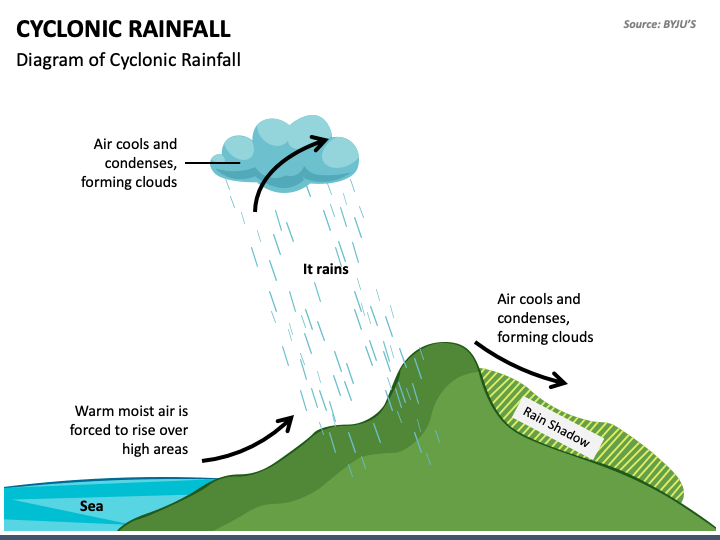Types of precipitation
a) Conventional Rainfall:
- When the land warms up, it heats the air above it. This causes the air to expand and rise. As the air rises it cools and condenses. If this process continues then rain will fall. This type of rainfall is very common in tropical areas.

b) Orographic Rainfall:
- Orographic precipitation results when warm moist air moving across the ocean is forced to rise by large mountains.
- As the air moves back down the mountain, it collects moisture from the ground via evaporation.
- This side of the mountain is called the leeward side. It receives very little precipitation.
- Orographic barriers tend to increase both cyclonic and orographic precipitation because of the increased lifting involved. The precipitation is composed of shower and steady rainfall.

c) Cyclonic:
- Cyclonic precipitation is caused due to lifting of air caused by pressure difference.
- If low pressure occurs in an area, air will flow horizontally from the surrounding area, causing the air in low pressure area to lift.
- The precipitation that results is also called non-frontal cyclonic precipitation.
- The large whirling mass of air at the center of which the barometric pressure is low is known as cyclone. And the center portion of this cyclone where the pressure is low, acts like a chimney, through which the air gets lifted, expands, cools and finally condensed causing precipitation.

d) Frontal:
- results when the leading edge of a warm, moist air mass (warm front) meets a cool and dry air mass (cold front).
